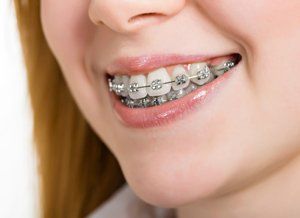Orthodontic Care
Dental Services
Orthodontics is a branch of dentistry that treats malocclusions, more commonly known as a bad bite. When the jaws and lips are not properly aligned, it leads to crooked teeth; the jaws do not look balanced, and the patient’s bite does not work as well as it should.
An orthodontist is a specialist who has been trained to fix bad bites using dental appliances like braces. When the teeth are corrected, along with their supporting structures, the result is an attractive smile and improved oral health.
Causes of Orthodontic Problems
Unfortunately, the majority of bad bites are hereditary. Problems that are inherited include crowding, spacing, protrusion, extra teeth, and jaw growth. Other cases result from early loss of primary teeth, thumb sucking, an accident, and even the loss of permanent teeth.
The Importance of Treatment
People with crowded and crooked teeth have difficulty cleaning their teeth, which in turn leads to tooth decay, periodontal disease, and eventually tooth loss. Moreover, a bad bite can quickly wear down the teeth surfaces, thus weakening the teeth structure. Other common issues experienced by those with orthodontic problems include difficulty chewing, difficulty speaking, jaw joint problems, as well as stress on the supporting bone of the teeth.
Aside from functional challenges posed by orthodontic abnormalities, an unattractive smile also lowers a person’s self-confidence. If left untreated, affected individuals will find it difficult and even embarrassing to smile and socialize with others. In addition, an untreated bad bite can also lead to expensive dental treatments later on in life.
When Do Kids Need an Orthodontic Check-Up?
Children should be seen by an orthodontist as soon as they reach their 7th birthday. This is the advice given by the American Association of Orthodontists. At this age, the specialist will already be able to recognize issues that are still easily treatable.
Can an Adult Still Benefit From Ortho Treatment?
Absolutely. Orthodontic braces can work at any age, and in fact, 20% of all orthodontic patients are over 18 years old. There are now orthodontic solutions that are more appealing to adults, including invisible aligners and comfortable dental appliances.
Types of Braces
In general, there are three types of orthodontic appliances that are designed to straighten the teeth:
Metal Braces: These are the traditional braces, and the ones that are available today are very different from the braces that were used a few decades ago. Nowadays, metal braces are more durable and comfortable to wear.
Invisalign: This is made of clear plastic aligners that need to be replaced every two weeks. The appliance is removable so that you can replace them on your own. Invisalign is best suited for adults who don’t want to be seen wearing clunky metal braces, but it’s appropriate for kids, teens, and adults alike.
Ceramic Braces: Patients who seek an attractive orthodontic solution that ensures a positive outcome for their treatment can opt for ceramic braces. These are clear braces that are just as effective as metal braces.
Your Role in Your Treatment
To help achieve a successful outcome for your orthodontic treatment, you need to follow your specialist’s instructions and attend all your appointments. You should also take good care of your oral health and maintain proper oral hygiene.
Duration of Treatment
Generally, orthodontic treatment takes anywhere from 12 to 36 months. Once your braces are taken off permanently, your dentist may also prescribe retainers to make sure your teeth do not go back to their old position.
Cost
Braces are now more affordable, but the cost depends on the length of treatment and the severity of your bad bite. The cost of treatment and any financing options available will be discussed with you before your treatment starts.
If you have a bad bite due to overcrowding, gapped, or misaligned teeth, you may be a good candidate for braces. Call our office at (239) 939-7070 so our dentist can evaluate your dental problem.



